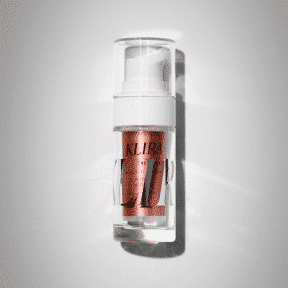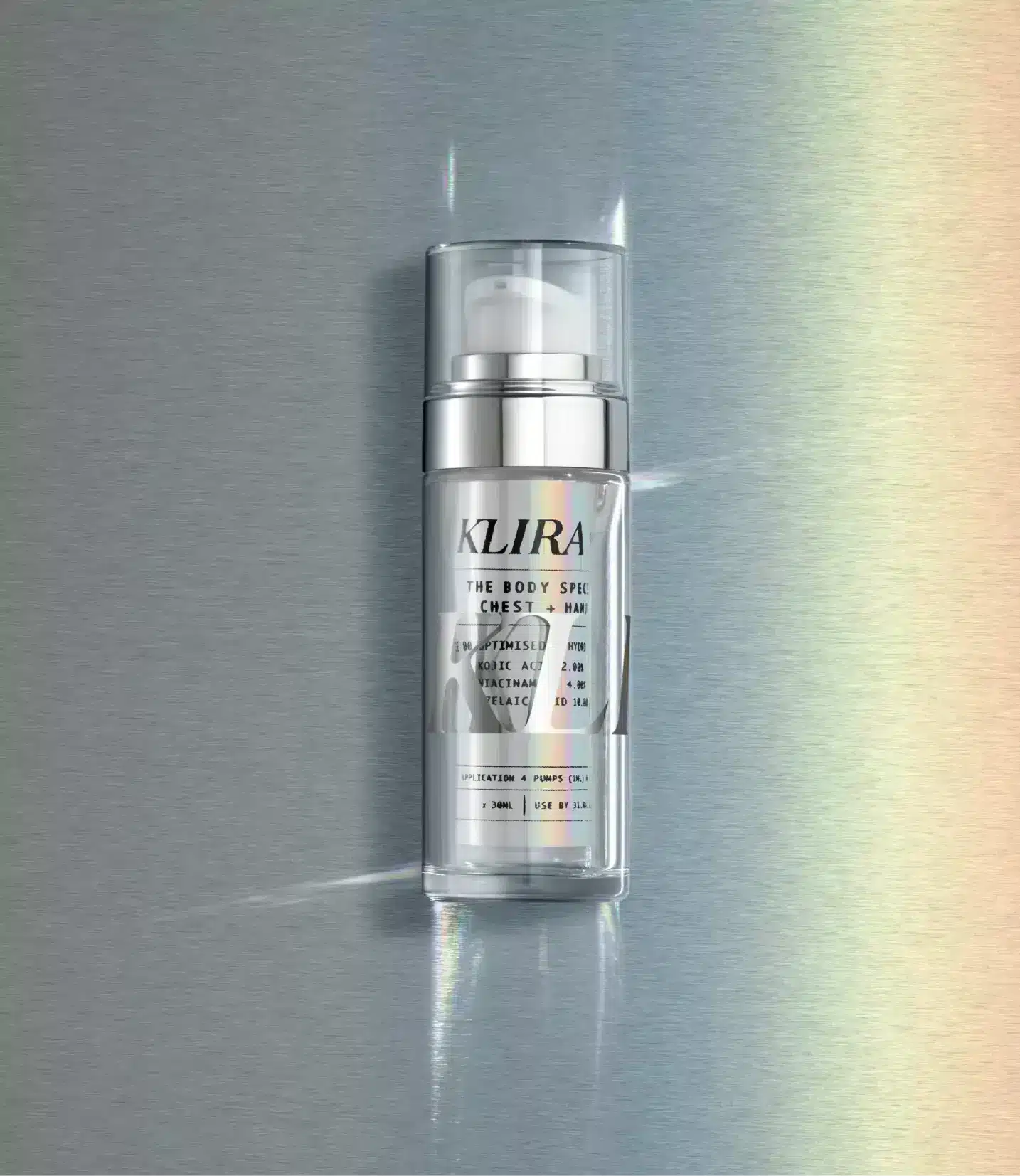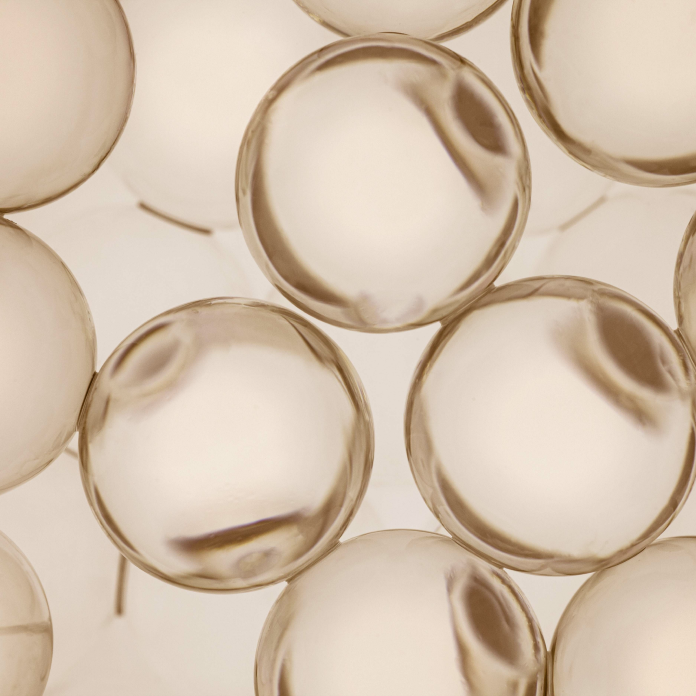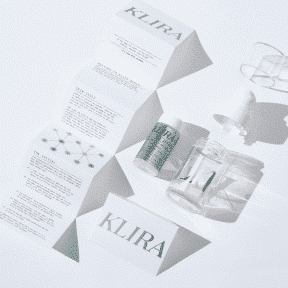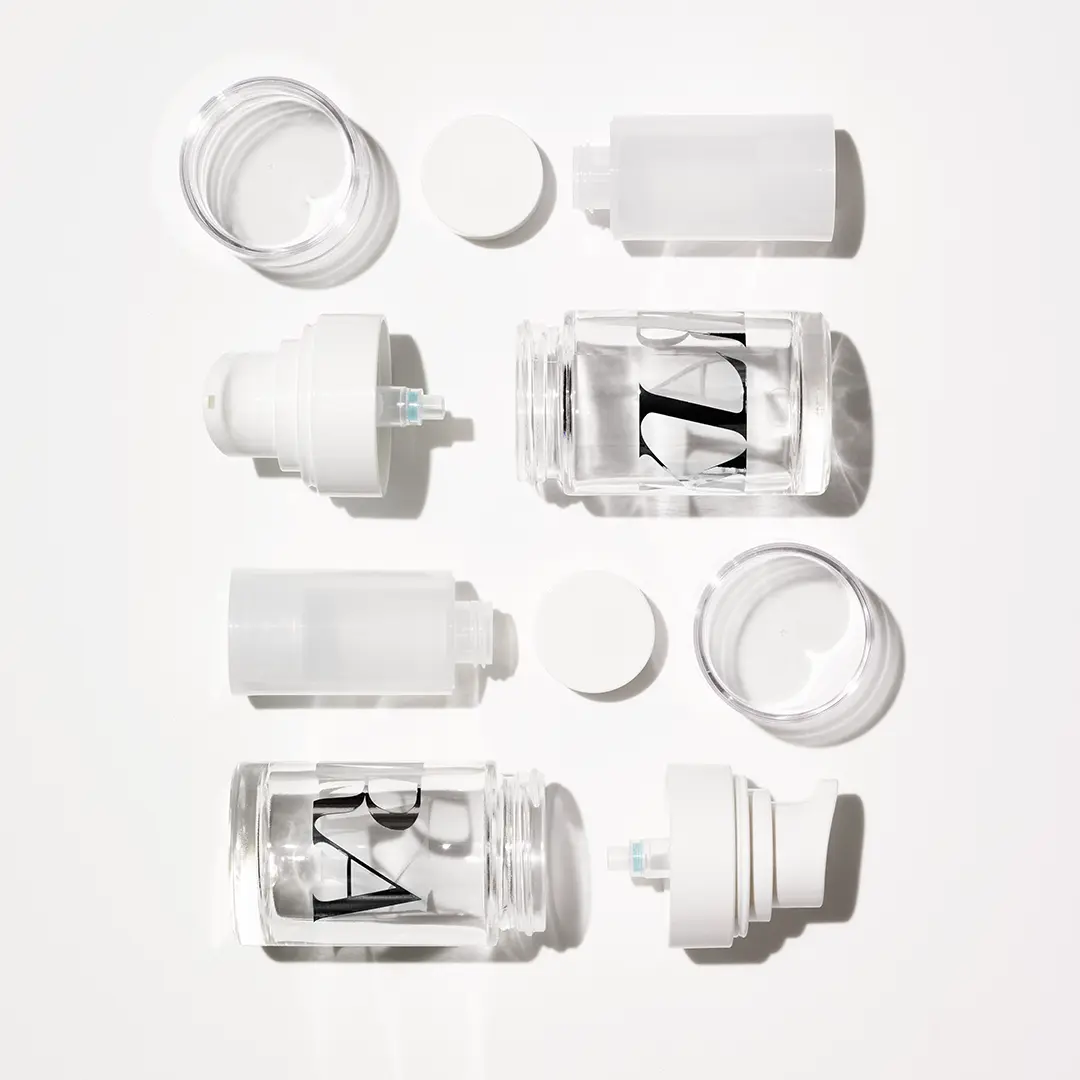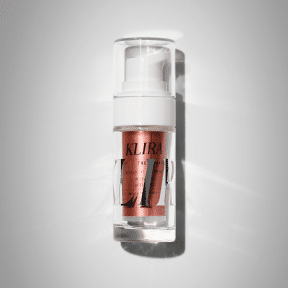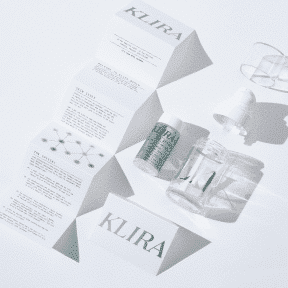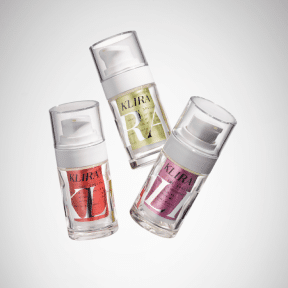The Special FAQs
Some of the ingredients in your Klira Special are acting at a cellular level to exert a biological change in the cells, to repair damage and to onward protect. Remember, this treatment works – this is not a marketing claim – this is a real change and has been proven to the very highest level of evidence, in the skin of humans, and in-life situations. The ingredients of this cream will be making a real difference to your skin.
We have also developed a specific base for your SkinSize™ that will allow maximum penetration into the skin in the most effective and nourishing way. Other ways you might have tried retinoids in the past might have induced some problems, this new formulation and the controlled slow introduction to your skin should mitigate those issues.
We will deliver the ingredients in increasing concentrations and changing the way it is delivered every month. You should experience far less of the problems that are normally associated with starting retinoids across every SkinSize™ and skin colour.
Your skin might feel a bit dry and even have a very fine scale to it a few days after starting to use the treatment. This might last up to 6 week in some cases. Essentially some of the ingredients are exfoliants meaning, the ingredients are doing the job of exfoliating the skin – from inside the pores and on the surface. That’s why we always say there is no need to scrub the skin. The ingredients are effectively doing the scrubbing for you.
Tretinoin can make the skin feel dry at the beginning of use – in the early days it has an irritating and drying effect on the skin. We have formulated the tretinoin to be delivered in a way that immediately provides hydration and an effective moisturising effect. Lots of other retinoids may be in gels – these can be very drying on the skin particularly if they have alcohol in them that too can be drying.
Essentially some of the ingredients are exfoliants meaning, the ingredients are doing the job of exfoliating the skin – from inside the pores and on the surface. That’s why we always say there is no need to scrub the skin. The ingredients are effectively doing the scrubbing for you. We also sometimes say to patients – “think of this a bit like a skin peel except instead of having to take a week off work and have a very red face you are swapping it for a gentle peel, just a bit at a time over 4 weeks.”
In terms of wanting to stop the peeling the idea is to let it run its course. It is expected to happen and will stop by itself as the skin becomes used to the treatment. The skin peeling is the first stage in the brightening of the skin. Our main tip is to apply your moisturiser over the top of your Klira Special at night (you can find supporting products under ‘My Routine’ of your account overview).
But remember to follow the basic routine:
- Don’t forget your gentle cleanser
- Cleanse using lukewarm water and fingertips – a very gentle cotton face cloth can be used to gently wipe the skin.
- Pat the skin until nearly dry
- Apply moisturiser onto the skin while it is “nearly dry”
NOTE: The peeling should be mild and never associated with any extra weeping, redness or blistering – these would be the much rarer sign of an allergic reaction to an ingredient in one of the creams of your skincare routine. In this case, all creams should be stopped and contact our Dermatology Nurse Consultant to discuss the potential need for allergy testing immediately.
Here’s the good bit: You don’t need to. The Klira Special contains all the ingredients to exfoliate the skin, right down into the pores. No physical exfoliator or scrubbing agent could achieve that. This gets where it needs to, but in a much gentler way than scrubbing at your skin.
The first question is… Why do you want to have a facial? All the ingredients you need to maintain healthy glowing skin are in the bespoke skin routine we have prescribed to you. People may want to have a facial for several reasons and here is our take on whether you should continue or not:
- Relaxing purposes: consider reflexology instead.
- Decongesting the skin: your Klira special is already doing this in a more meaningful way – some traumatic tools used for these types of facials can cause more inflammation and upset the skin routine. Additionally, some of the harsher acids used in these facials can upset the skin barrier and throw your routine out of whack.
- Fluid retention reduction: carry on with this but ask them to use one of the moisturisers we recommend as the vehicle for the message rather than oils like olive oil which can be more drying on the skin. Consider with Ice Globes.
- Blackhead removal: No need to continue with this, this is all in your Klira Special formulation.
- Skin Glow: no need to continue with this – this is all in your Klira Special formulation and additional treatments might compromise that.
If you are having laser hair removal in the area where you are applying your Klira Special, then you should stop the treatment 3 days before the laser. You can re-start usually the day after treatment. Show the ingredients to your laser provider and they can advise directly. Interestingly, the use of the Klira Special as part of your skincare routine is likely to lead to fewer problems with hyperpigmentation if you are having laser treatment.
Botulinum Toxin and Filler injections are usually completely fine to have, but you should show the ingredients to your practitioner – if they are not sure – let us know but ultimately you should then find a different practitioner (this one doesn’t know enough!).
Yes, you can. But the application of SPF is truly essential. There is no point in subscribing to the Klira Special routine if you are going to ignore the number one cause of skin ageing…. The sun!
The routine aims to protect the skin and start to repair any damage, this means that you are generally improving how you protect yourself from the sun. This will be in the form of broad-spectrum SPF 50 and other forms of sun protection methods like hats and cover-ups. However, being in the sun is a very healthy thing to do, we exercise, we walk, we play sports and enjoy the water, all very wholesome and healthy activities to be doing. We can continue to do all these things, but we need to be mindful that each additional piece of UV on the skin will contribute to further damage to the skin.
Our advice is to enjoy the sun but ensure you are protected.
SPF needs to be applied properly – 1 teaspoon amount to the face and the neck and it would need to be topped up throughout the day.
Our advice is to NOT have a break if you are going on holiday, apart from a few unique scenarios. There may be another adjustment you need to make to the routine but continuing with The Klira Special is important. Depending on what type of holiday it is you can then make the following adjustments:
- Hot and humid – ensure you top up your SPF during the day and use hats to protect the skin of the face.
- Swimming holidays – wash the face after the swim and apply your SPF – additional moisture might be needed so prepare to add extra moisturiser to your routine at night.
- Cold Ski holidays – the worst really as you have additional UV exposure with direct and reflective light as well as cold windy environments – this attacks the skin from all sides. Here we would recommend a strong moisturiser – you can see my moisturiser ladder for recommendations. It is important to increase the number of applications of SPF during the day.
- Wearing tight goggles or face masks for skiing or diving – recommend stopping The Klira Special for the duration of the holiday.
- Adventure holidays – If you are unable to wash or cleanse properly then we recommend stopping The Klira Special for the duration of the holiday.
You can most definitely sit and enjoy the sun if broad-spectrum SPF 50 is being worn and has been properly applied, wide-brimmed hats and the shade are advised. We never recommend anyone to sunbathe, even in an unprotected way.
Tretinoin is being used to reverse sun damage and promote collagen production in the skin. If you sunbathe you are stopping that process from happening – additionally, you will find the skin is less protected from UV.
The short answer is NO, it will improve areas of hyperpigmentation. However, if you were to use tretinoin that is too high of a dose, too harsh a base or incorrectly applied then it can cause inflammation that in darker skin types could lead to an increase in pigmentation. All these things have been considered for you when prescribing your SkinSize™ so as long as you follow the steps we have advised this should not be a problem for you.
Retinols and tretinoin are different and the percentage strengths are not easily correlated. We have developed a system for gently onboarding the tretinoin on to your skin, so it is better that you start on the lower strength. However, if you have been using tretinoin on your skin then we can start you on a higher dose.
This should not happen as we have developed a system specifically to avoid this. If somehow this did happen then of course we can reduce the strength.
You can but please let us know which one it is so we can thoroughly vet the ingredients for chemicals that might interfere or cause problems with the system – sometimes chemicals can interact and cause changes on the skin that have undesirable effects.
We have a screen ladder of sunscreen we recommend for your specific SkinSize™ – we just work through these step by step until we find the right one for you. About 20% of people need to make a change – so we work through these until we find the one that you are excited to use every day. If you would like to stick with your current sunscreen please let us know which one it is so we can thoroughly vet the ingredients for chemicals that might interfere or cause problems with the system
A difference will be noted in the skin quickly but it’s not always the difference you want to see… Most people experience a bit of dryness and irritation in the short term, you must ride through this for about 6 weeks – this is normal and we often say to patients – “Lend me your Skin” so we can get you past the 6 weeks.
When we first started using retinoids it took about 3 months to get established – with the Klira formula it should take about 4-6 weeks to get over the introduction, and start to see a positive difference in the skin at around 12 weeks. For fine lines and wrinkles, this is about 9 months.
New collagen takes time, it is NOT an overnight experience.
2 pumps from the Klira dispenser gives you exactly the right amount for your skin type – try to spread it further.
Yes, you can. While we don’t recommend this at the very beginning – since it’s best to understand the process first – once you’re established, you can apply the product to the skin around your eyes, avoiding the eyelids and under-eye area. Apply it up to your periorbital bone, which is approximately a 2cm margin surrounding your eye. This approach ensures effective results without causing irritation.
We wriggle around and rub our faces a lot at night without realising – likely you have moved some of the creams to this area – if this continues try putting on some moisturising cream to the eye area before you apply The Klira Special.
Yes, you can – we don’t advise this from the very beginning it is best to understand the process first, but once you are established then yes, you can start to apply to the skin on your chest and hands.
The routine has been developed to ensure maximum efficacy, comfort to the skin, and make the skin health change. Ideally, you don’t need to add anything else in your routine unless we suggest it to you. It’s important to avoid using products that contain active ingredients, such as acids and retinol, if you are using other creams, then do let us know which one it is so we can thoroughly vet the ingredients for chemicals that might interfere or cause problems with the system – sometimes chemicals can interact and cause changes on the skin that can have undesirable effects.
No, you don’t need to do this. There is no need for additional retinoid in your routine.
The cream is made specifically to suit your skin type. We know the active medical ingredients work best in a cream rather than a gel and that is the format we deliver this in. The cream base is made to your skin type with the right proportions that support and nourish the skin barrier.
Base ingredients contain: Aloe, Glycerine, Hyaluronic Acid, Cholesterol, Squalene, Hydrolyzed Collagen, Ceramides, Triglycerides, Shea Butter.
The medical ingredients include:
Azelaic Acid:
A compound found in wheat, rye and barley that can help treat acne, perioral dermatitis, seborrheic dermatitis, hyperpigmentation and rosacea because it soothes inflammation. Azelaic acid treats sunspots and melasma because it blocks the production of “abnormal pigmentation”. Much of the research” on topical azelaic acid is for prescription-strength formulas with 15-20% concentrations. While lower-grade options are generally found in over-the-counter preparations. Azelaic acid is also a tyrosinase inhibitor, meaning it can prevent hyperpigmentation because it interferes with melanin production. It’s anti-inflammatory for acne and its anti-pigment because it blocks tyrosinase. Azelaic acid is an antibacterial antioxidant that decongests clogged pores.
Tretinoin:
A form of acidic vitamin A, that has been classified as a drug or medicine, was first discovered in the ’60s by Dr Albert Kligman. It was first used to treat severe acne and later discovered as an effective solution to treat wrinkles and ageing skin, it penetrates the outer keratinocytes of the epidermis, causing a reaction to remove the dead superficial cells sitting on the surface, increasing the blood flow in the skin and thus, increasing the rate of new epidermal cell replication and collagen formation. This process allows for a healthier, less wrinkled appearance. Retinoids essentially make it more difficult for comedones to form, and the P-acne
bacteria become less prolific due to oxygen exposure of pores Tretinoin has been found to significantly lessen acne. It has significantly been shown to:
- Reduced fine lines and wrinkles
- Reduced inflammation related to acne
- Decreased hyperpigmentation
- Improved texture of the skin
- Increased collagen synthesis
Ivermectin:
Ivermectin is an anti-inflammatory without having to use steroids which will help to reduce the pink bumps and inflammation around follicles.
Hydroquinone:
Hydroquinone stops the melanocytes (pigment-producing cells) in the skin from making melanin – the substance that causes pigmentation of the skin.
The cream is developed to make the skin less dry and more hydrated, so it is designed to help solve that problem long term.
The cream is developed to make the skin less oily and congested, so it is designed to help solve that problem long term.
Retinoids are the group of Vitamin A creams that are used to treat the skin – there are multiple derivatives of this but the important thing to know is that they are not all the same. The difference tends to be those you can buy over the counter in the form of retinol, retinal and retinaldehyde etc, these must work to be converted by the skin into the active molecule. Even then by the end of the conversion, they are being delivered at much lower doses. Retinol and tretinoin may be from the same family but retinol is less powerful.
Retinols have a naturally weaker effect and are found in over-the-counter creams broadly known as cosmeceuticals. Retinols can still be effective, but the results won’t be as stark and will take much longer to appear if they do.
Retinols are easier chemicals for large companies to distribute at scale – but that easiness is sacrificed for the effectiveness that tretinoin can deliver.
That said, they’re very accessible, and you don’t need a prescription. If you want to induce a meaningful measurable difference in the skin that is more than hype, tretinoin is the way to do this and most dermatologists you speak to are on some type of topical retinoid regimen.
Looking after your skin during pregnancy is incredibly important. While we cannot prescribe tretinoin during your pregnancy, our custom Klira formulas can be adapted to support your skin. During pregnancy, you are more prone to hormonal changes including acne, sensitivity and hyperpigmentation. Our formulas are adjusted to keep these changes in check, keeping your skin barrier strong and your skin glowing. When you’re ready, we can seamlessly transition to reintroducing your retinoid. For those trying for a baby and/or breastfeeding, this will be reviewed on a case by case basis depending on the customers specific circumstances, however all of the above should be discussed with a prescriber so please reach out to the team for further information.
You can continue to use your regular foundation.
We are committed to being cruelty-free and do not test our products on animals. However, our formulations may include animal-derived ingredients.

